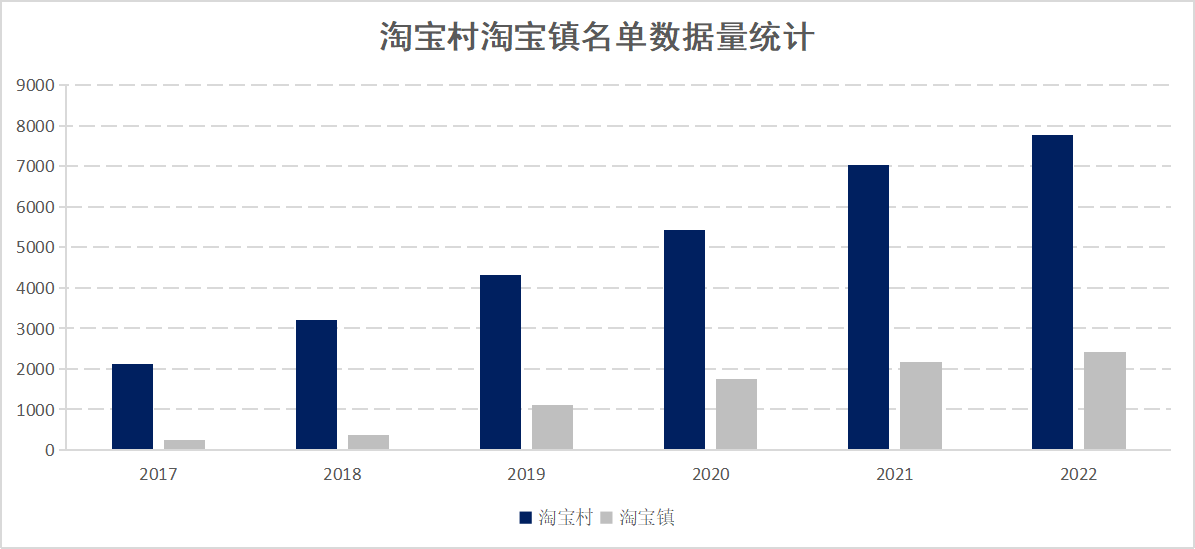With the rapid development of e-commerce, new urbanization represented by Taobao Villages has continuously progressed. Taobao Towns and Taobao Villages are initiatives launched by e-commerce giant Alibaba to support the development of small and medium-sized enterprises (SMEs) and startups, aiming to provide financing, marketing, training, and consulting services. By 2022, China had witnessed the emergence of 7,780 Taobao Villages and 2,429 Taobao Towns. In 2009, only 3 Taobao Villages existed nationwide, increasing to 20 by 2013. Today, Taobao Villages are widely distributed across 28 provinces, autonomous regions, and municipalities.
The certification criteria for "Taobao Villages" primarily include:
- (1) Location Criteria: Must be situated in rural areas, with administrative villages as the basic unit;
- (2) Sales Scale: Annual e-commerce sales on Alibaba platforms must reach 10 million yuan;
- (3) Online Merchant Scale: The village must have at least 100 active online stores, or active online stores accounting for 10% of total households.
The certification criteria for "Taobao Towns" primarily include:
- (1) A township must contain three or more Taobao Villages;
- (2) Annual e-commerce sales on Alibaba platforms must exceed 30 million yuan, with over 300 active online stores.
CnOpenData has compiled and structured the "Taobao Village" and "Taobao Town" list data. The urban-rural classification in this dataset follows the standards outlined in the Rural Revitalization Promotion Law of the People's Republic of China and the 2021 Statistical Division Codes and Urban-Rural Classification Codes from the National Bureau of Statistics. The dataset contains two information tables (Taobao Villages and Taobao Towns) with key fields including province (省), city (市), district/county (区县), village (村), and geographic coordinates, providing robust data support for rural economic research.
Data Scale

Time Coverage
2017-2022 (excluding 2018)
Field Display
Sample Data
Taobao Village List Information Table
Taobao Town List Information Table
Related Literature
- Cui Lili, Wang Lijing, Wang Jingquan. (2014). "Social Innovation Factors Promoting E-commerce Development in 'Taobao Villages': Evidence from Lishui, Zhejiang Province." China Rural Economy 12.
- Wu Yiping, Yang Fang, Zhou Cai. (2022). "E-commerce and Fiscal Capacity: Evidence from Chinese Taobao Villages." The Journal of World Economy 3.
- Zeng Yiwu, Cai Jinjing, Guo Hongdong. (2020). "Research on Chinese 'Taobao Villages': A Literature Review." Issues in Agricultural Economy 3.
- Liu Junjie, Li Chaowei, Han Simin, Zhang Longyao. (2020). "Rural E-commerce Development and Farmers' Digital Credit Behavior: Micro-evidence from Jiangsu 'Taobao Villages'." China Rural Economy 11.
Data Update Frequency
Annual updates
